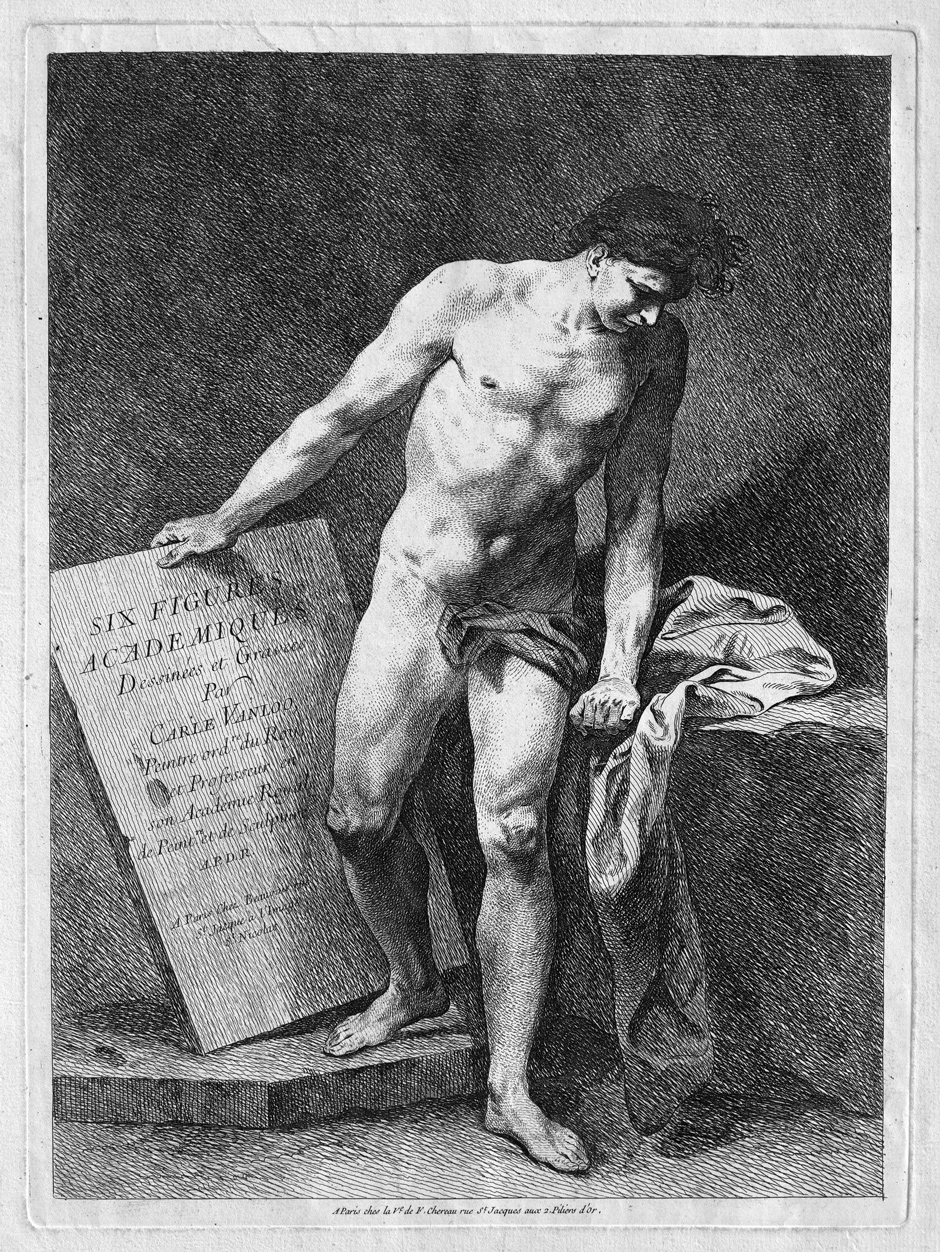Loading the page ...
Charles André van Loo
(1705 Nice – 1785 Paris)
Six figures académiques dessinées et gravées par Carle van Loo ... Suite of six etchings. Each measuring approx. 23.5 x 39 cm. 1743. Le Blanc 4–9.
The painter, Carle van Loo, was famous throughout Europe in his lifetime, as attested by the large number of major commissions he received and his ennoblement in 1750. Carle was trained by his brother Jean-Baptiste and, though still only a boy, followed him in 1714 to Rome, where he was apprenticed amongst others to Benedetto Luti. A pupil at the Royal Academy in Paris from 1720, Carle won the renowned Grand Prix in 1724. He subsequently spent lengthy periods in Rome and Turin, where he married the singer, Cristina Somis, in 1733. Fresco decorations and paintings in the Royal Palace in Turin, the Villa Stupinigi and several sacred buildings in the city serve as an enduring testimony to van Loo’s success at the court in Piemont. His career flourished quickly after his return to Paris in 1734 and his admission to membership of the Academy. Honourable appointments consolidated his reputation. From 1749, van Loo successively occupied various positions at the Royal Academy, ultimately being appointed director in 1763. The year previously he had been made Peintre ordinaire du Roy. Van Loo took portraits of Louis XV and Maria Leszczynska and received lucrative commissions for the interior painting of palaces and churches.
The present series of academic figure studies dates to 1743 and was probably designed as a deliberate challenge to Bouchardon’s series entitled Livre de diverses figures d’Académies ..., which had been issued in 1738 by the Parisian publisher, Gabriel Huquier. The cycle contained twelve etchings after red chalk drawings by Bouchardon made by Jean-Baptiste Perroneau, Pierre Aveline, Jean Hubert and, not least, Gabriel Huquier himself. It not only provided visual instruction for art students, but was also extremely popular with collectors. In 1743 van Loo consequently released the present series of figure studies from the Academy, the main difference being that he made the etchings himself after his own designs in order to demonstrate his artistic supremacy. The fine, intimately observed title page of the cycle is very similar to the frontispiece of Bouchardon’s series. The remaining portrayals are executed in an original, brisk and richly differentiated etching technique; the different poses of the nude male models are combined with traditional compositional schemes. Individual figure studies might be used as effective designs for religious subjects, such as the ‘Entombment of Christ’ or the ‘Resurrection’. Very fine, contrasting impressions with the full margins. Slight handling traces, with the original binding holes in the left margin, otherwise in excellent condition.
